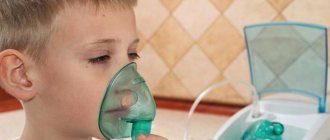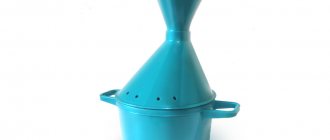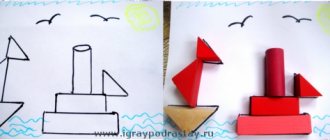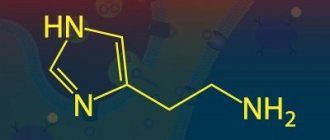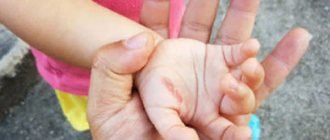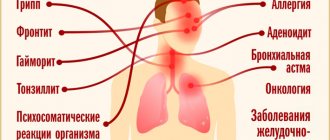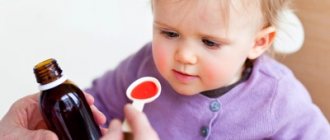Treatment of children with a nebulizer has been recognized by many mothers. Due to the delivery method, medications used in the nebulizer penetrate and effectively affect the affected organs. At the same time, you can safely refuse to take medications internally.
Young children like to be treated with a nebulizer Inhalation with a nebulizer recipes for children
The most successful and effective nebulizer recipes used to treat children:
- For dry cough: ACC (1 ml), Saline solution (1 ml). Dosage for children 2 - 5 years old. Inhalations are carried out 1-2 times a day. Combination with taking antibacterial drugs is unacceptable
- For suffocation that occurs during attacks and bronchial asthma: Ventolin (1 nebula) or Astalin (1 ampoule). Inhalations are carried out during asthma attacks
- For non-productive cough: Tussamag (1 ml), Saline solution (3 ml). Children 2 - 5 years old 2 - 3 times a day
- For ARVI: Interferon (2 ml), Saline solution (2 ml). Children 1 - 5 years old 3 times a day
- For laryngitis, runny nose, productive cough: Saline solution (4 ml) or Borjomi mineral water - 4 times a day for children of any age
- For viscous sputum: Lazolvan (1 ml), Saline solution (1 ml). For children over 2 years of age, the dosage is doubled. The course of treatment does not exceed 5 days
- For whooping cough: Pertussin (1 ml), Saline solution (2 ml). For children under 8 years old
- For bacterial complications of ARVI: Decasan (2 ml), Saline solution (4 ml). For children 2 - 5 years old, inhalations are carried out 2 times a day for no more than 5 days
IMPORTANT: When purchasing medications at a pharmacy, you need to warn the pharmacist that you need medications for use in a nebulizer.
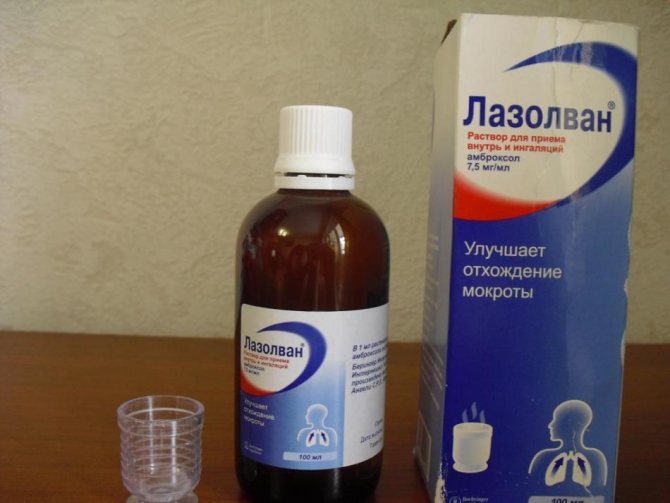
Inhalations with Lazolvan help to quickly get rid of phlegm
How long to inhale with a nebulizer - time
The rules for using a nebulizer indicate the time for one inhalation to be within 5 - 10 minutes.
If you inhale for less than 5 minutes, there will be no benefit from the procedure, and there is no point in breathing medications for longer than 10 minutes.
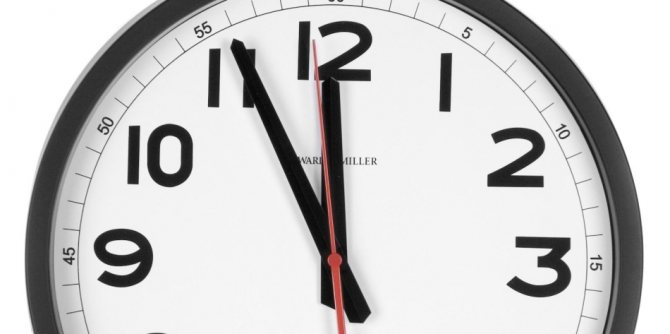
Minimum duration of inhalation - 5 minutes
IMPORTANT: If you don’t have a watch at hand at the time of inhalation, you can use the amount of solution in the nebulizer measuring cup as a guide. In 10 minutes, about 4 - 5 ml of the product is consumed with intense breathing.
Inhalation for cough with nebulizer recipes
Cough can be unproductive (“dry”) and productive (“wet”). Depending on the type of cough, drugs for inhalation are selected.
For a “dry” non-productive cough, mucolytics are used:
- ACC + saline - 2 ml each. Children from 2 to 6 years old, twice a day. For children under 2 years of age, the dose of drugs is halved
- Lazolvan for inhalation + saline solution - 2 ml each. Children from 2 to 6 years old three times a day. Children under 2 years old take 1 ml of each drug
- Borjomi (in glass bottles) - 3 ml. Inhalations should be carried out for children of all ages 3-4 times a day
- Gedelix drops + saline solution . For children under 12 years of age, 1 ml of Gedelix is diluted in 2 ml of saline solution. For children over 12 years of age, 2 ml of each drug is used
- Pertussin (1 ml) + saline solution (1 ml) . Children under 12 years of age are inhaled twice a day, over 12 years old - three times a day.
IMPORTANT: When a non-productive cough is replaced by a productive one, inhalation medications are changed.
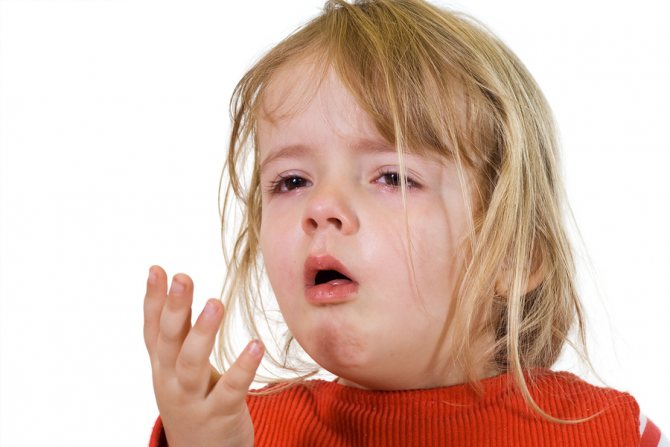
For a “wet” cough, the nebulizer is most effective:
- Rotocan extract + saline solution . Prepare a solution in advance from 3 ml of rotokan and 100 ml of saline solution. For each inhalation, take 4 ml of the finished product. 2 - 3 procedures are carried out per day
- Sinupret (1 ml) + saline solution (1 ml) . Inhalations are carried out three times a day
Inhalations for a runny nose with a nebulizer - recipes
You can overcome a runny nose with a nebulizer quite quickly and easily. The action of a nebulizer is not only gentler than the action of drops and sprays for the common cold, but also much more reliable.
The main effect that nebulizer procedures have on the nasal mucosa is hydration. For this, the following solutions are used:
- Alcohol tincture of propolis (1 ml) + saline solution (20 ml) for inflammation of the nasal mucosa, allergic rhinitis, 2 times a day
- Alcohol tincture of calendula (1 ml) + saline solution (40 ml ) for acute inflammation in the nasopharynx, twice a day
- Tonsilgon (1 ml) + saline solution (2 ml ) for adenoids in children, 2 times a day
- Interferon (2 ml) + saline (2 ml ) for viral runny nose, 3 times a day
- Alcohol tincture of chlorophyllipt (1 ml) + saline solution (10 ml ) for staphylococcal rhinitis

Using a nebulizer can treat runny nose in children
IMPORTANT: Steam inhalers are used to treat a runny nose, since only they spray particles of the required size - from 8 microns.
Inhalation with a nebulizer during pregnancy
Pregnant women are allowed to inhale with mineral water or saline solution. Any other drugs can be used for inhalation only with the consent of a doctor.

Treatment with a nebulizer during pregnancy should be carried out under the supervision of a physician.
You can do inhalations with a nebulizer at a temperature
If you strictly follow the instructions in the nebulizer user manual, then inhalation at temperatures above 37.5˚C is unacceptable. This is true in the treatment of ARVI and other infectious diseases during the acute period of their course.
However, situations are possible when, in agreement with the attending physician, the nebulizer is used at a higher body temperature. For example, with obstructive bronchitis with an increase in temperature, inhalations help relieve attacks of suffocation.
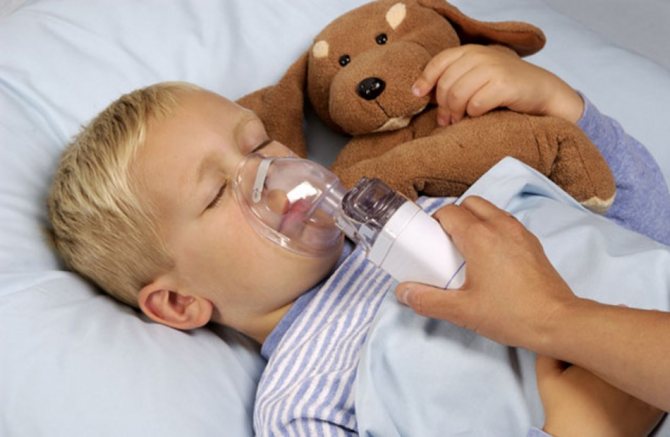
Inhalations at fever are contraindicated in most cases
IMPORTANT: It is unacceptable to independently decide on the advisability of using a nebulizer if a child has an elevated body temperature.
Inhalation with a nebulizer for angina
Inhalation treatment of angina with a nebulizer shows good results:
- the acute phase of the disease is significantly reduced
- you can do without ingesting antibacterial drugs (if you use them in a nebulizer)
- alleviation of pain
- reduction of swelling of the throat and nose
IMPORTANT: You cannot use a nebulizer for a sore throat if the patient has an elevated body temperature, heart problems or bronchial asthma. There is also no point in treating purulent sore throat with inhalations.
For use in a nebulizer, medications from the following are used:
- Cromohexal - for severe swelling of the nasopharynx
- Miramistin, Furacilin - antiseptics
- Tonsilgon - homeopathy, helps with any throat diseases
- Alcohol tinctures: Calendula, Rotocan, Chlorophyllipt, Eucalyptus - eliminate swelling and relieve pain
- Borjomi, Saline - softens, moisturizes mucous membranes, relieves swelling
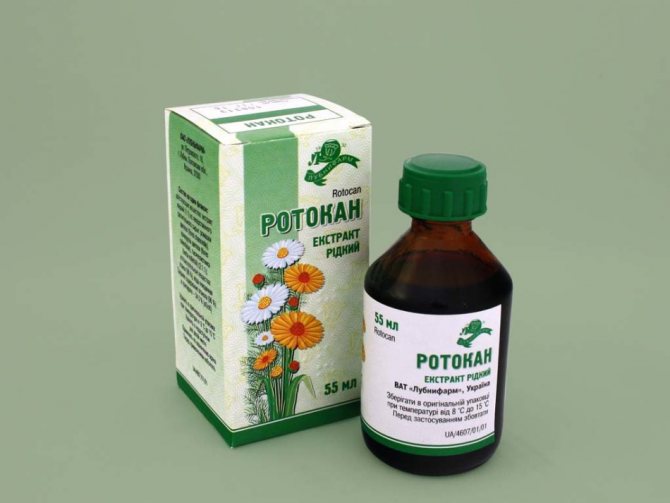
Inhalations with rotokan help relieve sore throat due to sore throat
IMPORTANT: The dosage of the drug is prescribed by the doctor depending on the type of sore throat and the severity of the disease.
Inhalation for bronchitis with a nebulizer
Treatment of bronchitis with a nebulizer is very effective. The patient is recovering quickly thanks to inhalation therapy. After the first few procedures, the bronchi expand, the mucus thins and begins to flow freely. Swelling and inflammation are relieved.
For bronchitis use:
- to liquefy sputum and remove it - Lazolvan (Ambrobene, Ambroxol).
- for quick removal of sputum - ACC
- for moisturizing the mucous membrane of the respiratory tract - Borjomi, Saline
- to relieve or reduce inflammation - Rotokan
For obstructive bronchitis:
- to relieve spasms and prevent asthma attacks - Berodual
- for relief of acute attacks of suffocation - Berotek, Salbutamol, Salgim, Ventolin
- for mild obstruction - Atrovent
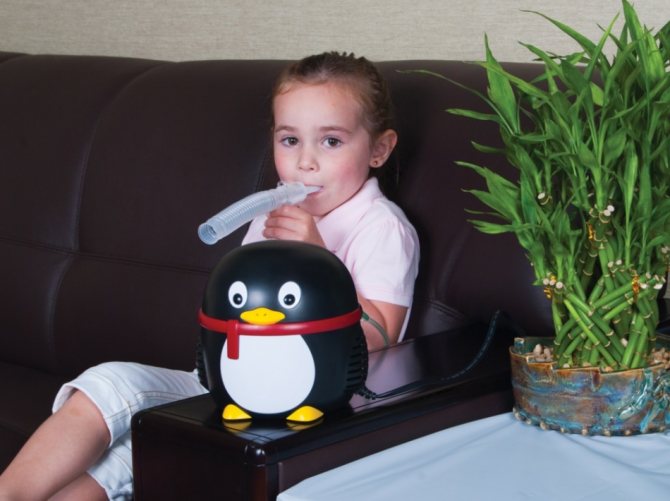
Nebulizer inhalations help relieve spasms during bronchitis
IMPORTANT: After inhalation, the patient needs to rest for about half an hour. At this time, sudden movements and temperature changes in the room are unacceptable.
Inhalations for sinusitis with a nebulizer
Using a nebulizer, you can successfully treat untreated sinusitis. The principle of its operation guarantees the rapid flow of medications directly into the maxillary sinuses. There are no side effects with this treatment of sinusitis.
The selection of the medicine and its dosage is carried out by the doctor, focusing on the patient’s condition and the stage of sinusitis, but the following drugs are most often used:
- antibiotic solutions (Bioparox, Dioxidin, Streptomycin, Gentamicin) - to remove the infectious agent
- vasoconstrictors (Naphthyzin, Xylometazoline, Oxymetazoline, Naphazoline) - to facilitate breathing and drainage of the contents of the maxillary sinuses
- immunostimulating (Interferon, Derinat) - in the first days of ARVI, if this disease accompanies sinusitis
- anti-inflammatory (alcohol tinctures of calendula, eucalyptus, propolis, Rotocan, Chlorophyllipt) - to reduce inflammation
- combined (Polydexa, Tonsilong, Rinoflumicil) - simultaneously have antimicrobial, vasoconstrictor and anti-inflammatory properties
- saline and alkaline (Saline solution, Borjomi) - to moisturize the nasal mucosa
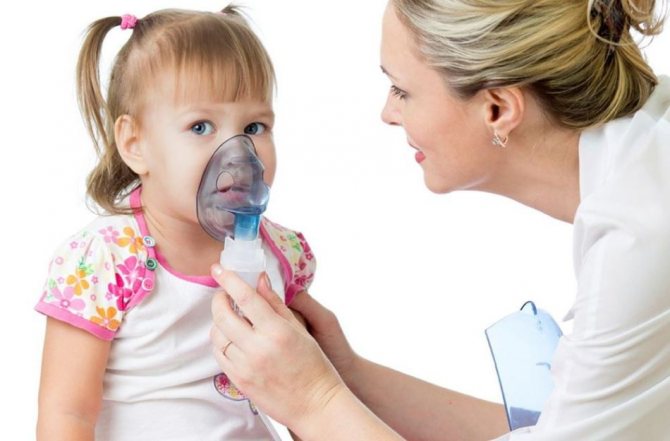
To treat sinusitis, inhalations with antibacterial drugs are performed
IMPORTANT: Inhalations for sinusitis are carried out only after preliminary cleaning of the nose.
Inhalation for laryngitis with a nebulizer
Direct delivery of medications to the larynx affected by laryngitis using inhalation with a nebulizer guarantees fast, effective and the safest treatment for both children and adults.
For laryngitis, the following drugs are used in a nebulizer:
- for sputum removal - Lazolvan, Ambrobene, Ambroxol
- for the prevention of pneumonia and bronchitis - Adrenaline, Eufilin (dosage is prescribed only by a doctor, independent use is strictly prohibited)
- to moisturize the nasopharyngeal mucosa - Saline solution, Borjomi
- to eliminate a bacterial infection - antibiotic Fluimucil
- to eliminate spasms, asthma attacks - Dexamethasone, Pulmicort, Hydrocortisone or other glucocorticosteroid
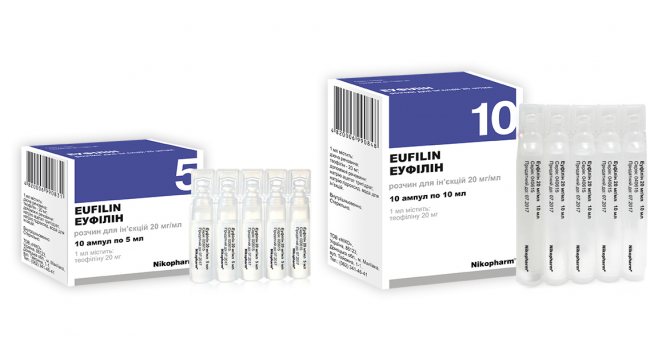
Inhalations with euphelin prevent complications of laryngitis
IMPORTANT: Treatment of laryngitis in young children should only be carried out under the supervision of a doctor.
Inhalation of mineral water with a nebulizer Mineral water
is used in a nebulizer to treat inflammation of the respiratory system. Such inhalations help relieve swelling and inflammation, moisturize the mucous membranes of the nasopharynx, thin and remove sputum, and also soften cough.
(Borjomi, Narzan, Yesentuki) , is suitable for inhalation . 3-4 ml of water is poured into the measuring cup of the nebulizer and the procedure is carried out for at least 8 minutes. It is permissible to carry out up to 4 inhalations of mineral water per day.
IMPORTANT: Inhalation of mineral water with a nebulizer is absolutely harmless to the body.
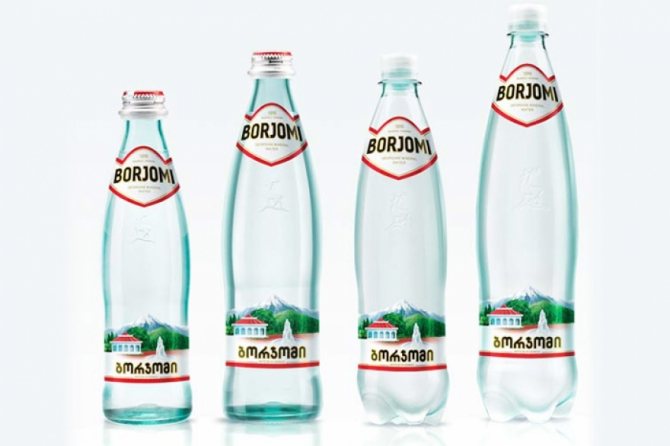
Inhalations with Borjomi soften and moisturize inflamed mucous membranes
Benefits of use
The use of a nebulizer is possible at any stage of a runny nose, which is typical for various colds and infectious diseases. This device is not dangerous for the child and can effectively eliminate a runny nose without the use of medications.
The benefits of using a nebulizer include:
- Moisturizing the nasal mucosa.
- Elimination of unpleasant sensations in the nose (burning, itching).
- Softening crusts formed due to dried mucus.
- Liquefies mucus for easier removal from the nasal cavity.
- Soft and long-lasting impact, without any injuries.
- No side effects.
- Uniform distribution of the drug in the nasal cavity.
- The drug enters the upper sections of the bronchi, which ensures the prevention and treatment of cough.
Unlike nasal drops or sprays, which quickly flow from the nose to the mouth and are destroyed by saliva, inhalation using a nebulizer allows the drug to be distributed to all parts of the nose. In addition, nebulizers have a local effect, so there are no side effects from their use.
Inhalations using a nebulizer help cleanse the nasal cavity of accumulated mucus, relieve nasal congestion, as well as swelling and inflammation of the nasal mucosa. This procedure can also be used to treat complications of a runny nose such as sinusitis. In this case, antiseptic, antibacterial and antihistamines will be needed.
Inhalation of soda in a nebulizer
Baking soda helps fight colds. By breathing in soda steam, you may notice easier breathing and the disappearance of pain in the nasopharynx. However, inhalation with a soda solution in a nebulizer is unacceptable.
IMPORTANT: Since the effect of soda evaporation is similar to the evaporation of saline solution, it is used for the nebulizer.
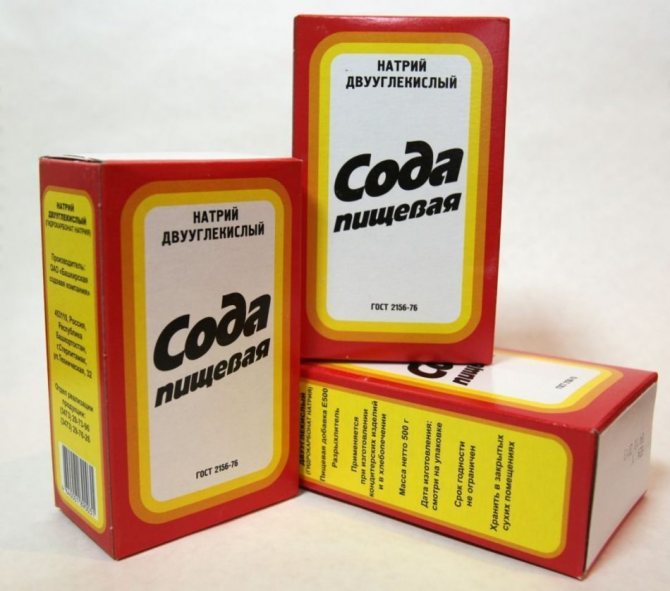
Inhalation with a Berodual nebulizer is prescribed for diseases of the respiratory system, namely: bronchitis, asthma, asthma attacks.
The dosage of Berodural is prescribed by the doctor for each individual case, but for all children the following scheme for calculating the drug per inhalation is usually used: 1 drop of Berodural per 1 kg of the child’s weight, but no more than 10 drops at a time and 30 drops per day. It is taken into account that 10 drops = 0.5 ml.
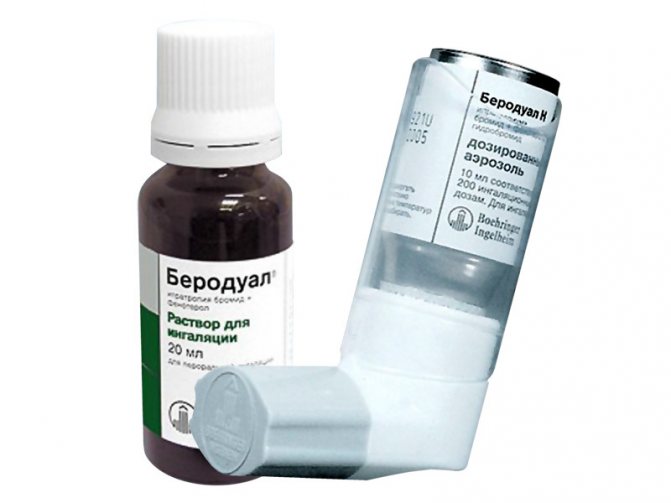
Berodual relieves asthma attacks
IMPORTANT: The drug has serious side effects such as dizziness, nausea, muscle spasms, limb tremors, rash and itching. Inhalations with berodual are contraindicated for pregnant women, people with heart disease, and allergic manifestations.
Treatment with this drug always begins with the use of a minimum dose. Berodual is diluted in 3 ml of saline and inhaled. The duration of one procedure is 5 - 7 minutes.
Usually the patient feels relief after the first procedure. The duration of treatment with Berodual nebulizer is 5 - 7 days, 3 times a day.
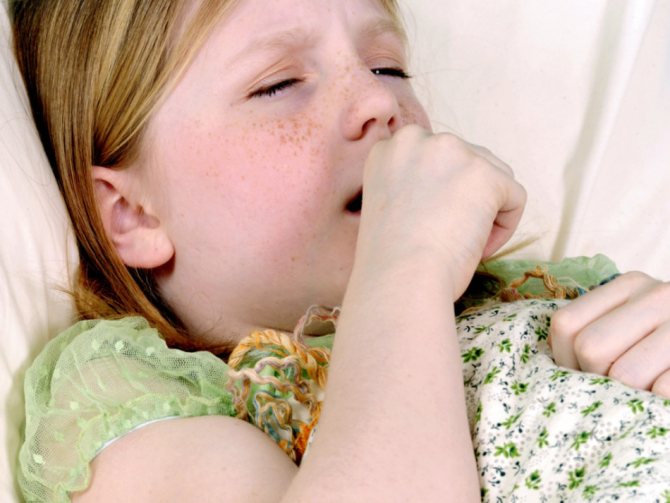
After the first inhalation with Berodual, the patient will feel relief
IMPORTANT: For more effective treatment, the doctor may prescribe a combination of Berodual with a mucolytic (Lazolvan, Ambroxol, Ambrobene). For one inhalation, use 2 ml of mucolytic + 2 ml of saline solution + 10 drops of Berodual or alternate inhalations.
The price of Berodual solution for inhalation in pharmacies is about 350 rubles.
Medicines for inhalation
The prescription of medications is carried out by a doctor; an independent choice may turn out to be erroneous, which will only lead to complications. Certain medications can provoke an allergic reaction. Read the warnings on the packaging carefully. In controversial situations, seek advice from specialists.
The following medications for inhalation are very popular:
- Ambrobene - mucolytic and expectorant effect;
- Berodual - helps well with any problems with the bronchi;
- Ventolin is distinguished by its versatility of use.
Each drug has its own scope of application. Improper use is fraught with dangerous consequences and can make the situation worse.
Medicines for inhalation are varied. A large selection of medications becomes a favorable factor for caring for a child’s health.
Medicines for inhalation with a nebulizer
The following medications can be used to prepare nebulizer solutions:
- antitussives (Tussamag, Lidocaine) - for dry paroxysmal cough
- mucolytics (Fluimucil, ACC, Ambrobene, Ambroxol, Lazolvan, Pectusin, Sinupret) - to thin and remove mucus
- bronchodilator and (Berodual, Berotek, Atrovent, Ventolin) - to relieve asthma attacks in obstructive respiratory diseases
- antibiotics (Dioxidin, Ceftriaxone) - to eliminate bacterial infection
- antiseptics (Miramistin, Furacilin, Chlorophyllipt) - for the treatment of rhinitis, tonsillitis, ARVI
- immunomodulators (Derinat, Interferon) - for acute colds
- glucocorticosteroids, hormonal drugs (Dexamethasone, Pulmicort, Cromohexal) - to relieve asthma attacks
- vasoconstrictors (Naphthyzin, Oxymetazoline, Naphazoline) - to eliminate the feeling of stuffiness in the nose
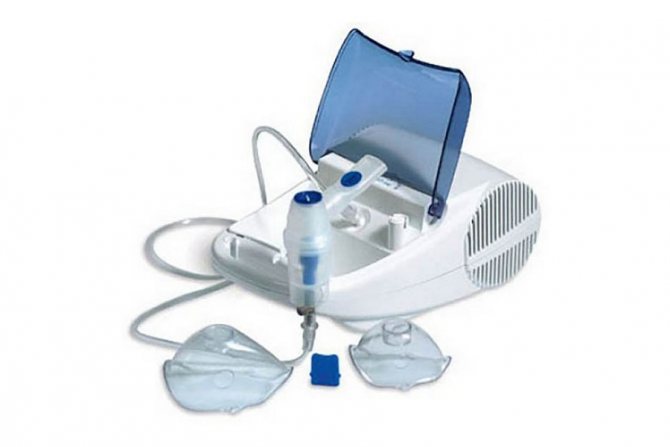
A wide variety of drugs can be used for inhalation with a nebulizer.
Inhalation solution for nebulizer
To prepare a solution for the nebulizer, the medicine is diluted with saline solution (0.9% sodium chloride) in the proportions specified in the recipe.
IMPORTANT: To prepare solutions, you cannot use water or another substitute instead of saline solution.
The temperature of the solution before inhalation should not be lower than 20˚C. To quickly warm up the solution, you can simply hold the container with the solution in your hands for a few minutes.
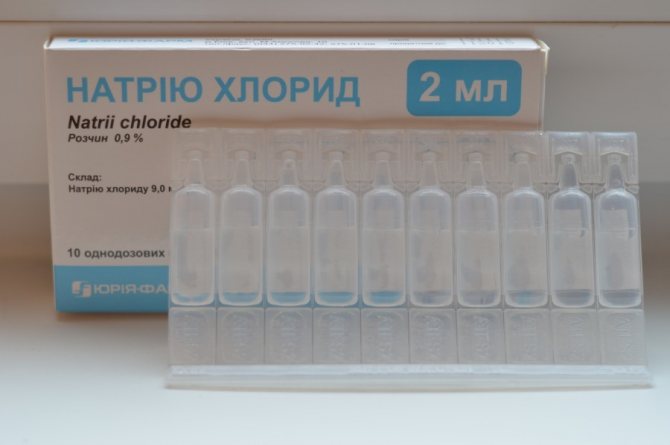
Sodium chloride (saline solution) is used to prepare solutions.
Nebulizers do not use oil solutions, as well as solutions based on decoctions and herbal tinctures.
Treatment with a nebulizer is very effective and convenient even for small children and seriously ill weak people. The main thing is to use the device for its intended purpose, following the operating instructions, and under no circumstances experiment with medicinal solutions.
Types of devices
Types of nebulizers:
- Ultrasonic. The aerosol is formed due to high frequency vibrations. The particle sizes are no more than five micrometers. Such devices are highly efficient, do not produce noise, and are small in size. But ultrasonic nebulizers have a short service life.
- Compressor. The aerosol is formed under the pressure of compressed oxygen, so the devices are quite noisy. They are more versatile, but heavy (up to two kilograms) and bulky.
- Membrane. The aerosol particle size ranges from two to five micrometers. Advantages: silent, compact, you can perform inhalations while lying on your back. These nebulizers can operate either from mains or batteries.
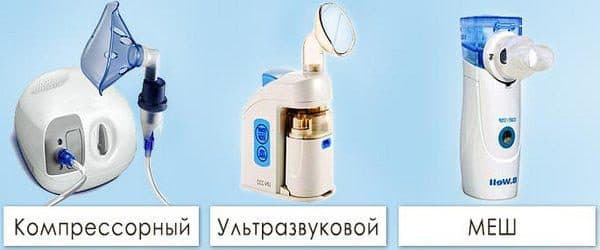
When choosing a device for inhalation, you should remember the following features:
- Inhalations for small children and newborns are carried out using an electronic mesh (membrane) nebulizer.
- When using hormonal and antibacterial medications to treat a runny nose, you should not use an ultrasonic nebulizer.
- None of the nebulizers allows for inhalation procedures using essential oils and infusions or herbal decoctions.
